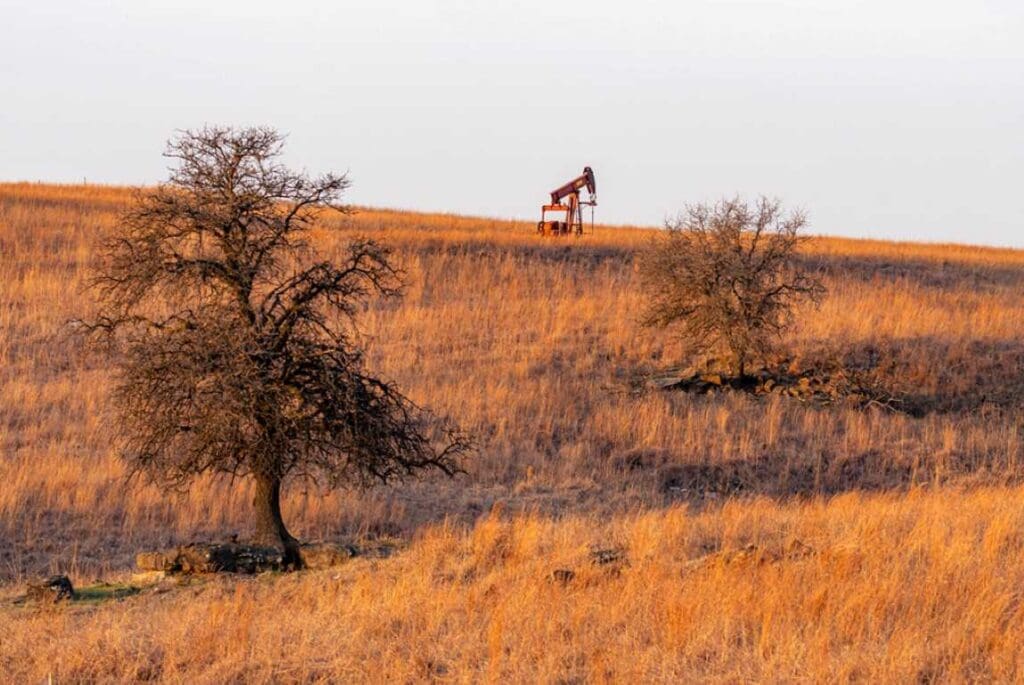Explore the latest insights from top science journals in the Muser Press daily roundup (July 3, 2025), featuring impactful research on climate change challenges.
In brief:
U.S. military spending reductions could substantially lower energy consumption
Ryan Thombs of Penn State University, U.S., and colleagues present these findings in the open-access journal PLOS Climate.
Of all the world’s institutions, the U.S. military produces the most greenhouse gas emissions. This occurs through such activities as maintaining bases, continual preparations and training, research and development, and transporting people, supplies, and weapons worldwide. According to military leaders, anthropogenic climate change threatens geopolitical stability and national security. Meanwhile, prior research suggests possible links between various nations’ military spending and their national-level emissions.
However, few studies have analyzed associations between military spending and direct measurements of military energy consumption. To help fill that gap, Thombs and colleagues conducted a statistical analysis of publicly available data on U.S. military expenditures and U.S. Department of Defense (DOD) energy consumption from 1975 to 2022.

The analysis showed that reductions in U.S. military spending are associated with decreased energy consumption. Decreased spending appears to have a bigger effect on saving energy than increased spending does on increasing energy consumption, with these effects due primarily to reductions in energy consumption from facilities, vehicles and equipment, and – in particular – jet fuel. The researchers note that this asymmetry suggests that modest U.S. military spending cuts could meaningfully reduce fossil-fuel consumption and contribute to climate change mitigation.
The researchers also developed forecasts of the possible effects of different spending decisions on energy consumption from 2023 to 2032, exploring various sizes of spending increases or cuts. These forecasts suggest that, by 2032, sustained cuts could yield annual energy savings comparable to the annual energy usage of the U.S. state of Delaware or the nation of Slovenia.
Given the potential implications for climate change and sustainability, the researchers note the need for further research to elucidate what mechanisms might underlie the observed asymmetrical effects of military spending on energy consumption.
The authors summarize: “We show that sustained cuts to U.S. military expenditures could result in annual energy savings on par with what the nation of Slovenia or the U.S. state of Delaware consumes annually by 2032.”
Journal Reference:
Thombs RP, Jorgenson AK, Clark B, ‘Reducing U.S. military spending could lead to substantial decreases in energy consumption’, PLOS Climate 4 (7): e0000569 (2025). DOI: 10.1371/journal.pclm.0000569
Article Source:
Press Release/Material by PLOS
Smarter flight decisions can cool the planet, UC Irvine study shows
A new study led by a University of California, Irvine scientist reveals that airlines can make smarter tradeoff decisions to cut aviation’s warming impact. The NASA- and National Science Foundation-supported research, published online in Nature, offers hopeful news for the future of air travel and climate action.
Civil aviation contributes to global warming through several factors: carbon dioxide from fuel, nitrogen oxides that affect ozone and methane levels, and the formation of lingering condensation trails. Each of these plays a role in trapping heat in the atmosphere. Historically, efforts to reduce one of these climate offenders have often increased another, leading to tough decisions for the aviation industry.
But now, researchers led by Michael Prather, a professor of Earth system science at UC Irvine, have created a new decision-making tool that gauges the full climate impact of each aviation activity, including the uncertainties. Called Global Warming per Activity, the metric measures how long and how strongly each component affects the atmosphere – whether it lasts hours or a century. The key is having quantified uncertainties in all these elements, allowing users to formulate a decision risk curve calculating the probability that a given tradeoff will be successful in mitigating climate change.

“We have always tried to build uncertainty quantification into our climate assessments,” Prather said. “But this new decision tool uses the information to provide accurate risk quantification for climate tradeoff decisions.”
For instance, rerouting flights to avoid conditions that produce contrails might result in slightly increased fuel consumption. However, if those contrails are significantly reduced, there could be a net positive effect on the climate.
The study found that if aviation choices lead to even a 3 to 5 percent reduction in contrails or NOx emissions, they can outweigh a 1 percent increase in CO2 emissions over a 100-year period. In other words, carefully chosen strategies that increase fuel use slightly can actually reduce the long-term climate impact of flying. This approach has only been applied to climate change damage and has not addressed tradeoffs in terms of economic costs (such as more fuel per flight).
The method can empower airlines and regulators to make smarter decisions that benefit everyone. And while previous models often struggled to compare the effects of short-lived and long-lived pollutants, GWA allows for more accurate, activity-based comparisons – helping the aviation industry find the least harmful options for reducing climate change.
“This is a win for both science and society,” Prather said. “Our findings show that we don’t have to choose between reducing carbon emissions and tackling other warming pollutants. We can find a balance that leads to meaningful progress.”
By quantifying the likelihood of a positive climate outcome, the study presents a new approach to evaluating tradeoffs with confidence, even in the face of uncertainties. The risk curves provide policymakers and airline planners with a clearer understanding of the priorities and potential consequences of their actions.
The implications reach beyond aviation. The GWA tool could also help assess the climate impacts of other industries – like shipping, agriculture or manufacturing – where different types of emissions compete and interact, Prather said.
Journal Reference:
Prather, M.J., Gettelman, A. & Penner, J.E., ‘Trade-offs in aviation impacts on climate favour non-CO2 mitigation’, Nature (2025). DOI: 10.1038/s41586-025-09198-2
Article Source:
Press Release/Material by University of California – Irvine (UC Irvine)
Chinese scientists reveal how climate shift enhanced Jurassic biodiversity in East Asia
The Yanliao Biota, a collection of well-preserved Middle Jurassic fossils from East Asia, includes early mammals capable of swimming and gliding, as well as dinosaurs that reveal the origins of birds.
A new study by Chinese scientists, published in National Science Review, shows how a climate shift around 167 million years ago created diverse habitats, fueling evolutionary breakthroughs in the Yanliao region.
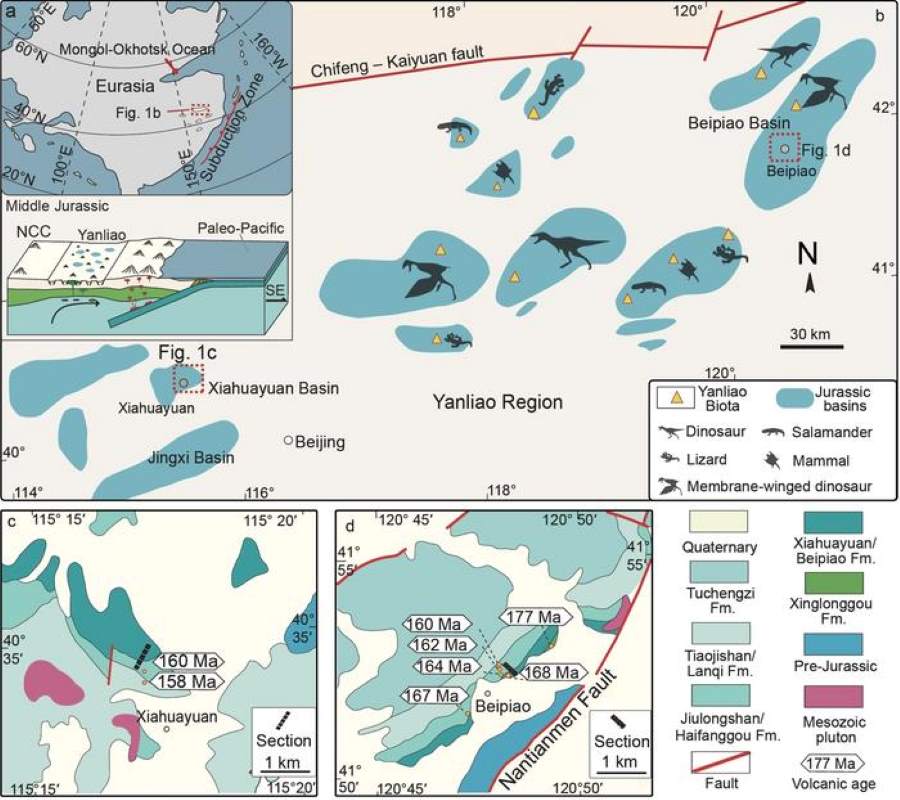
Conducted by Dr. Wenxing Hao from the Chinese Academy of Sciences, the team studied the Beipiao and Xiahuayuan basins. They analyzed sediments, pollen records, and carbon isotopes, identifying a climate shift around 167 to 165.5 million years ago. This period saw fewer coal deposits and a change from fern-heavy to pine-like vegetation, indicating less humid conditions.
The study estimated a reduction in annual rainfall from over 1,000 mm to below 750 mm, based on modern comparisons, corroborated by climate models and evidence of decreased chemical weathering in the region’s rocks.
This climate shift, combined with tectonic activity, changed the region from wet river and lake systems to seasonal plains. These varied landscapes created new ecological niches, allowing species to evolve in isolation. For example, early mammals developed gliding and digging behaviors, while dinosaurs like Anchiornis evolved feathers, suggesting the origins of flight.
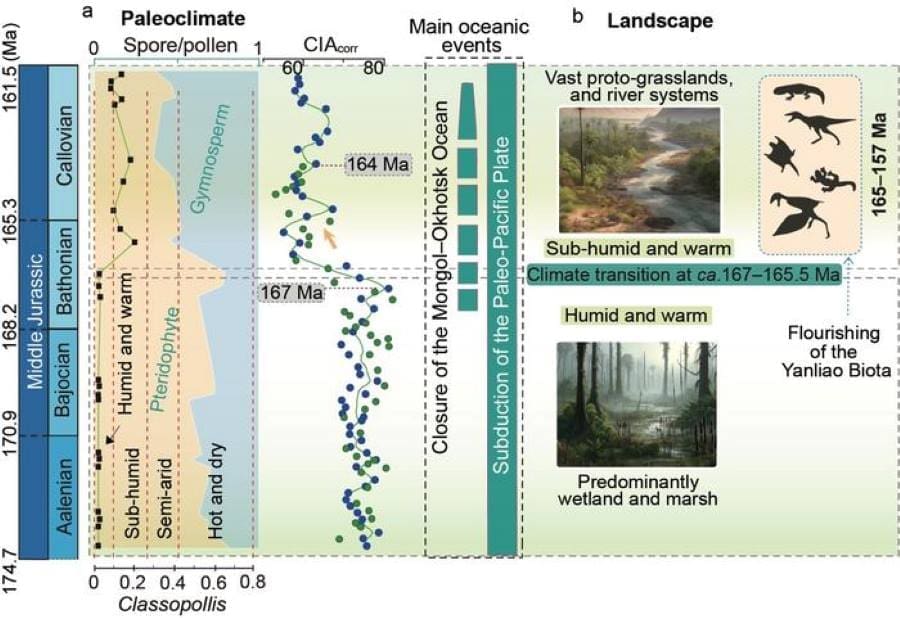
“This shift to sub-humid conditions created a patchwork of habitats,” said Dr. Wenxing Hao, lead author of the study. “It gave species room to adapt in unique ways, sparking the incredible diversity of the Yanliao Biota.”
The findings also shed light on modern challenges. “By studying how past climate changes shaped life, we can better understand how today’s ecosystems might respond to environmental shifts,” Dr. Hao added.
The research team, including experts from the Chinese Academy of Sciences, China University of Geosciences, Peking University, and Hefei University of Technology, analyzed sedimentary and pollen data alongside climate simulations. Their work reveals how environmental changes drove species diversification through ecological isolation, offering insights into Earth’s evolutionary history.
Journal Reference:
Wenxing Hao, Jianghai Yang, Haibing Wang, Ross N Mitchell, Chunxia Zhang, Ruoyuan Qiu, Jiaqi Guo, Wang Zhang, Xiujuan Bao, Chenglong Deng, Xiaolin Wang, Yongyun Hu, Jin-Hui Yang, Guang Zhu, Zhonghe Zhou, Rixiang Zhu, ‘Climate change enhanced habitat diversification for the Middle Jurassic Yanliao Biota in East Asia’, National Science Review nwaf194 (2025). DOI: 10.1093/nsr/nwaf194
Article Source:
Press Release/Material by Science China Press
Ignoring peatlands could derail climate goals
The northern peatlands are vast waterlogged ecosystems that store immense amounts of carbon in deep layers of partially decayed plant matter. While they cover just a fraction of Earth’s surface, they contain around one-third of the world’s soil carbon, thanks to their unique ability to accumulate thick layers of peat over thousands of years.
The study, co-led by IIASA researcher Biqing Zhu and Chunjing Qiu from East China Normal University, and published in One Earth, highlights that although peatlands continue to absorb carbon dioxide (CO2) as the climate warms, they also release substantial amounts of methane (CH4), a potent greenhouse gas.
The team used the OSCAR Earth System Model to capture the complex interactions within peatlands and their global impact, and found that these rising methane emissions could offset much of the climate benefit from the peatlands’ carbon storage capacity, especially in scenarios where global temperatures exceed 1.5°C before eventually falling back below that threshold.
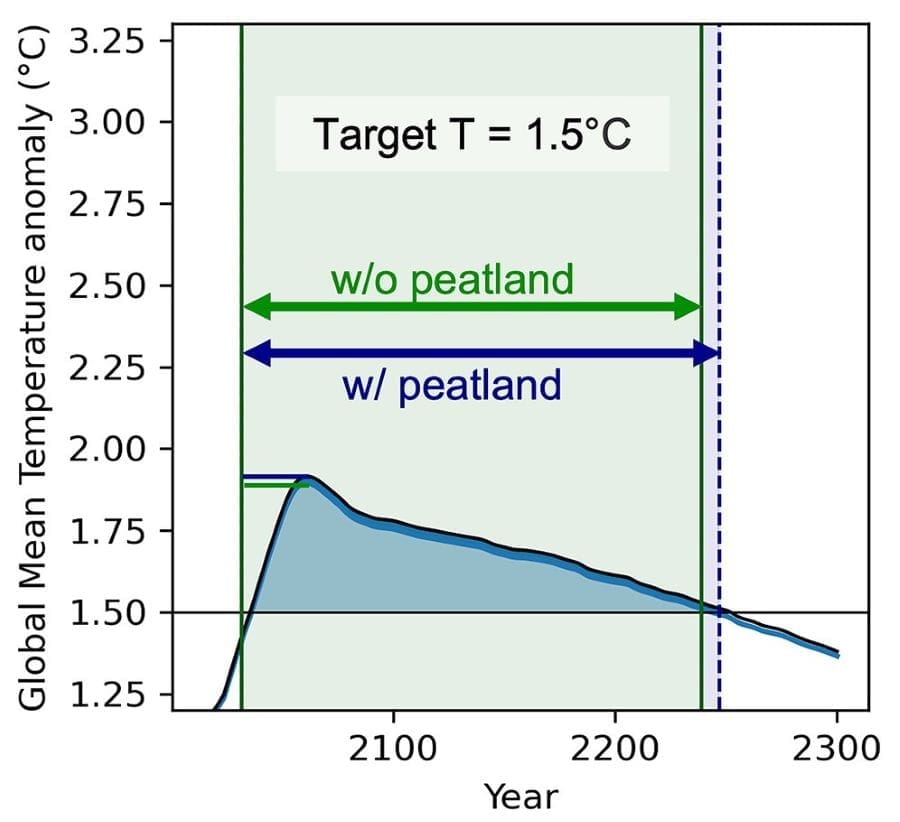
“Our study aimed to understand the critical role of northern peatlands in global climate change, especially if the world temporarily overshoots the 1.5°C limit,” Zhu explains. “Our results indicate that natural systems like peatlands, which are often overlooked in climate plans, can act as accelerators that make it much harder to cool the planet back down. This is a crucial risk for climate policy to consider.”
Although peatlands will keep taking up carbon, rising temperatures drive increased methane emissions, which undermine their overall cooling effect on the climate. The researchers found that, in overshoot scenarios, the additional methane released from peatlands effectively cancels out part of their carbon sequestration capacity. This hidden feedback means humanity could need to remove about 10% more carbon from the atmosphere to return to safer climate levels than previously estimated.
This means that if peatlands are left out of climate strategies, policymakers risk severely underestimating how much carbon removal will be needed, particularly if the world temporarily warms beyond 1.5°C.
“Systems like peatlands may have only a small effect on peak warming, making them easy to overlook, but they can make it much harder to bring temperatures back down afterward,” notes Zhu. “Overshoot needs serious attention because natural systems often respond in uncertain and irreversible ways.”
The team emphasizes that continued international cooperation is essential to refine understanding of these critical Earth system feedbacks and to inform climate policies that can adequately account for overshoot risks.
Journal Reference:
Zhu, B., Qiu, C., Gasser, T., Ciais, P., Lamboll, R.D., Ballantyne, A., Chang, J., Chaudhary, N., et al., ‘Warming of northern peatlands increases the global temperature overshoot challenge’, One Earth 101353 (2025). DOI: 10.1016/j.oneear.2025.101353. Also available on ScienceDirect.
Article Source:
Press Release/Material by International Institute for Applied Systems Analysis (IIASA)
Data-driven strategies to advance methane pyrolysis catalysts
Methane (CH4) pyrolysis, a reaction that produces hydrogen without emitting carbon dioxide, often utilizes molten media catalysts. A recent research paper has explored how artificial intelligence and machine learning are helping scientists identify these catalysts more efficiently.
Details were published in the journal ACS Catalysis.
The industrial implementation of methane pyrolysis via molten media catalysis has been stymied by the need for extremely high temperatures, raising energy costs and technical barriers.
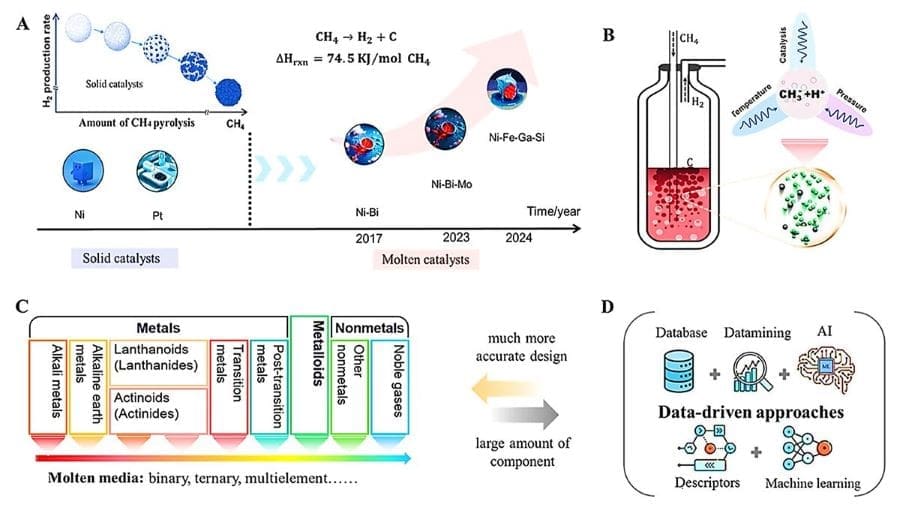
Recent breakthroughs have shown that multicomponent molten systems, including binary, ternary, and quaternary mixtures, can enable CH4 pyrolysis at more moderate temperatures. Yet, designing such systems is challenging due to the vast number of elemental combinations and the inherent atomic disorder within molten catalysts.
“To systematically explore the design space of multicomponent molten catalysts, data-driven approaches guided by AI offer significant advantages over traditional trial-and-error experimentation,” says Hao Li, a professor from Tohoku University’s Advanced Institute for Materials Research (WPI-AIMR) who led the study. “We propose descriptor-guided, generative model-guided, and active learning-guided strategies to accelerate catalyst discovery.”
The research highlights how descriptor-guided design can identify key physicochemical properties influencing catalyst performance, while generative models can suggest novel compositions for experimental validation. Active learning frameworks, integrating continuous feedback from experiments, can further refine predictions to target optimal catalyst candidates.
“Our next steps involve developing machine learning-based molten catalyst models using high-quality training data,” Li explains. “We also aim to build self-driven data acquisition platforms and advance multiscale simulation methods to better understand real reaction environments.”
The team emphasizes the importance of large-scale experimental databases to support data-driven catalyst design. The Digital Catalysis Platform (DigCat), developed by the Hao Li Lab, is cited as the largest catalysis database and the first digital platform of its kind globally.
Li concludes: “By combining AI, machine learning, and experimental data, we hope to overcome the design bottlenecks of molten media catalysts and accelerate the industrialization of methane pyrolysis technologies.”
Journal Reference:
Yuanzheng Chen, Xuxuan Huang, Yangdong He, Qian Liu, Junmei Du, Wei Yang, Wenhan Wang, Di Zhang, Xue Jia, Hongyan Wang, Yongliang Tang, Qingkai Yu, Seok Ki Kim, and Hao Li, ‘Data-Driven Strategies for Designing Multicomponent Molten Catalysts to Accelerate the Industrialization of Methane Pyrolysis’, ACS Catalysis online, 15, 11003–11012 (2025). DOI: 10.1021/acscatal.5c02415
Article Source:
Press Release/Material by Advanced Institute for Materials Research (AIMR) | Tohoku University
Featured image credit: Gerd Altmann | Pixabay


